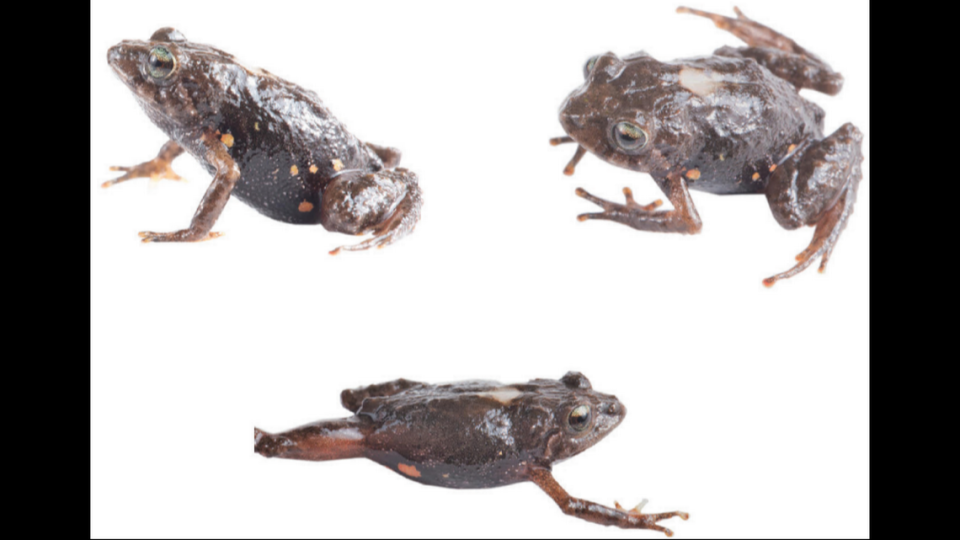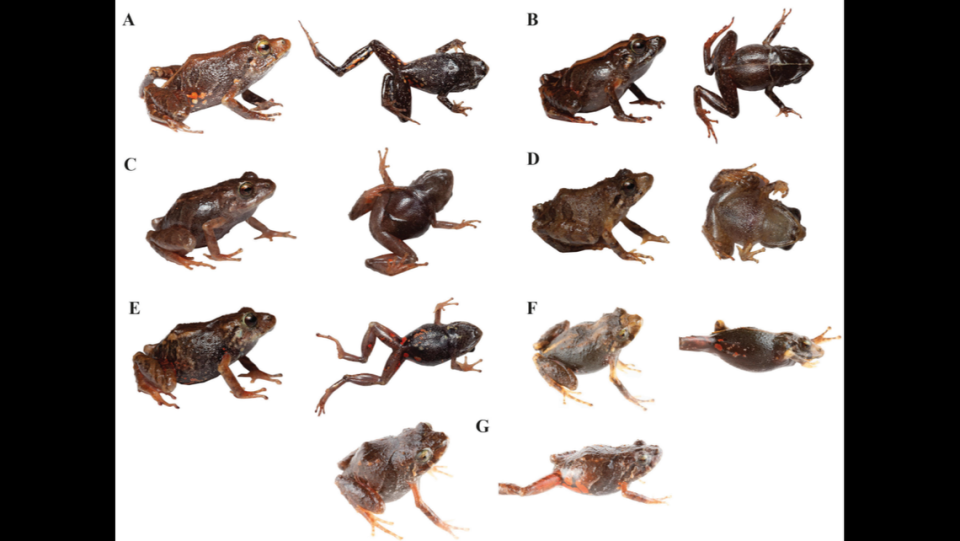Whistling creature with reddish-pink groin found near Ecuador volcano. See new species
Deep within the unexplored depths of Ecuador’s Andes mountains, a tiny creature made her home in the leaf litter covering the floor of a volcano slope. Then she was nabbed by researchers.
The small, “cryptic” rainfrog looked like other species, but scientists noticed some peculiar traits and realized they had discovered a new species, according to a study published Sept. 26 in ZooKeys.
Scientists said they reviewed museum material and new specimens after a separate study found that several creatures had been wrongly identified. Through their research, they identified two new species that were previously considered part of the Pristimantis gladiator species.
Now, the study identified the two species as Pristimantis donnelsoni and Pristimantis kayi.
Pristimantis are a type of rainfrog characterized by their “small body size,” short snout, “robust body,” toe and finger lengths, and unique head shape, according to the study. Here’s what scientists learned about the two new species.
Pristimantis donnelsoni
Using 23 collected specimens, including 13 males and 10 females, scientists characterized P. donnelsoni as a small rainfrog with rough skin.
The species’ head, back, sides and limbs are brown, and they have a large round white blotch on the middle of their backs, researchers said. Their groins are covered with colorful markings ranging from reddish to pinkish-whitish.

The frogs have robust bodies and short limbs, and their eyes are silver with a copper horizontal bar on their iris, according to the study. The holotype measured about 0.61 inches long.
Scientists identified the female holotype from the eastern slopes of Tungurahua Volcano, but the species is known to live in a total of seven localities, the study said. The frogs make their homes in the leaf litter and small herbacious plants covering the forest floor.
The species was also characterized by its distinct call, which were described as “very melodic whistles.” Scientists said male specimens were observed calling during the day and sometimes at night.
Researchers named the species after Don Nelson Palacios “as a tribute to his friendship and collaboration,” according to the study.
Pristimantis kayi
Scientists used 14 specimens, including four males and 10 females, to identify P. kayi as a new species. The species’ female holotype was discovered near Sumaco Volcano.
The small species has rough grayish brown skin covered in small, scattered warts, according to the study. Its throat and belly are dark brown with small yellowish-white spots, and its lower front side has orange spots.

Researchers said the creature also has several whitish markings near its groin, and it has orange to red spots covering its groin. Its eyes are gold and have “a reddish-copper horizontal bar.”
Similar to P. donnelsoni, the small species has a robust body. Its holotype measures about 0.78 inches long.

Researchers said the species lives on the forest floor among low vegetation such as shrubs, grasses and ferns.
Male specimens call during day and night, and their call consists of “several elements with different characteristics, ranging from single notes to pulsed notes,” experts said.
The species was named after German physicist Andreas Kay who spent time documenting biodiversity and helping conserve Ecuadorian forests, according to researchers.
Sumaco is about 80 miles northeast of Tungurahua in central Ecuador.
‘Electric-blue’ creature with 8 eyes found lurking in Thailand tree. See new species
Five-armed creature — with spear-like teeth — found in ocean depths. See new species
Scaly creature — so tiny it’s hard to catch — is found on ocean floor. See new species


